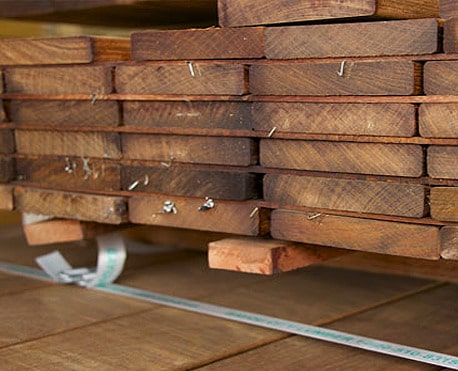A Guide to Rough Cedar Lumber

With its attractive grain patterns, aromatic scent, and natural durability, rough cedar lumber is a favorite material for a variety of outdoor projects. Rough cedar offers a beautiful rustic look and provides years of weather-resistance without chemical treatments. Read on to learn about the different types of rough cedar lumber, pros and cons, popular uses, costs, how to choose the right boards, and basic finishing options.
Types of Rough Cedar
There are two main types of cedar available for outdoor building projects:
Western Red Cedar
Grown along the west coast, this type has a reddish hue and straight grain. It has high natural oil content for good weather resistance. The wood has a medium weight and density.
Alaskan Yellow Cedar
As the name implies, this variety grows in Alaska. The wood has a yellowish color and fine, uniform texture. It is extremely durable and moisture-resistant. Alaskan yellow cedar is lightweight yet strong.
Both types provide outstanding performance for outdoor projects with a beautiful rough-sawn look.
Benefits of Using Rough Cedar
Rough cedar lumber offers many advantages for builders and DIYers:
- Beautiful, distinctive grain patterns when rough-sawn
- Natural weather resistance and rot resistance
- Resistant to cracking, checking, and cupping
- Does not require chemical treatment
- Easy to work with hand or power tools
- Stains and finishes well
- Available at economical price points
- Sustainable and renewable wood source
- Naturally insect-repellent properties
Rough cedar’s durability, beauty, and cost are ideal for decking, fencing, siding, and outdoor furniture.
Potential Drawbacks
A few things to keep in mind when using rough cedar:
- The wood naturally lightens to a grayish hue when left unfinished.
- Prone to tannin bleeding when staining, requires primer.
- Rough texture requires more frequent finishing maintenance.
- Not rated for structural framing use in building codes.
- Softer than other woods like oak, can dent from impacts.
- Raw lumber will have higher waste from outer edge cuts.
Most downsides can be mitigated with proper project planning, finishing, and care.
Popular Uses for Rough Cedar Lumber
Rough cedar is well-suited for many outdoor applications:
- Decking – A natural, slip-resistant choice for decks.
- Fencing – Both privacy and decorative stylings.
- Siding – Provides rustic curb appeal.
- Outdoor furniture – Excellent for benches, chairs, tables.
- Planter boxes – Holds up well against soil and moisture.
- Gazebos – Complementary natural look for structures.
- Pergolas – Durable and stainable for shaded structures.
- Raised garden beds – Resilient against decay in outdoor planters.
- Accent trim – For porches, shutters, garage doors.
Rough cedar offers beauty and performance wherever it’s used.
Cost Considerations
Rough cedar costs:
- $3-$9 per linear foot for 1x lumber, depending on grade and width.
- $9-$12 for 5/4 decking boards.
- $300-$900 for 100 sq. ft. of T&G siding.
- $800-$2500 for 500 sq. ft. of decking.
Prices fluctuate based on lumber market conditions. Buying direct from local sawmills can offer significant savings.
Choosing the Right Boards
When selecting rough cedar boards:
- Choose an appearance grade for the project – grades reflect knot sizes and overall look.
- Select boards with consistent coloration when possible.
- Examine grain patterns and growth ring spacing as desired.
- Look for straight, flat boards without excessive cupping or twisting.
- Purchase boards of sufficient length to minimize end-butting.
- Allow for extra width when planning final milled dimensions.
Carefully chosen boards help achieve optimal appearance and performance.
Basic Finishing Options
Rough cedar can be:
- Left to weather naturally to a driftwood gray.
- Treated with a tannin-blocking primer and stained in opaque stains.
- Sealed with a penetrating oil finish like Penofin to maintain a natural look.
- Brushed/sprayed with a semi-transparent stain for hint of color.
- Top coated with marine spar varnish for maximum protection.
Choose a finish suited to the project, maintenance goals, and desired final look.
Conclusion
With its unmistakable grain, fragrant scent, and natural weather-resistance, fire resistant lumber is ideal for a wide range of exterior applications. When properly selected, finished, and maintained, rough cedar will provide many years of performance and beauty. Taking the time to understand different cedar species, grades, and finishing options allows you to choose and use this exceptional material successfully. Your next outdoor project will look, feel, and smell better with authentic rough cedar lumber.

